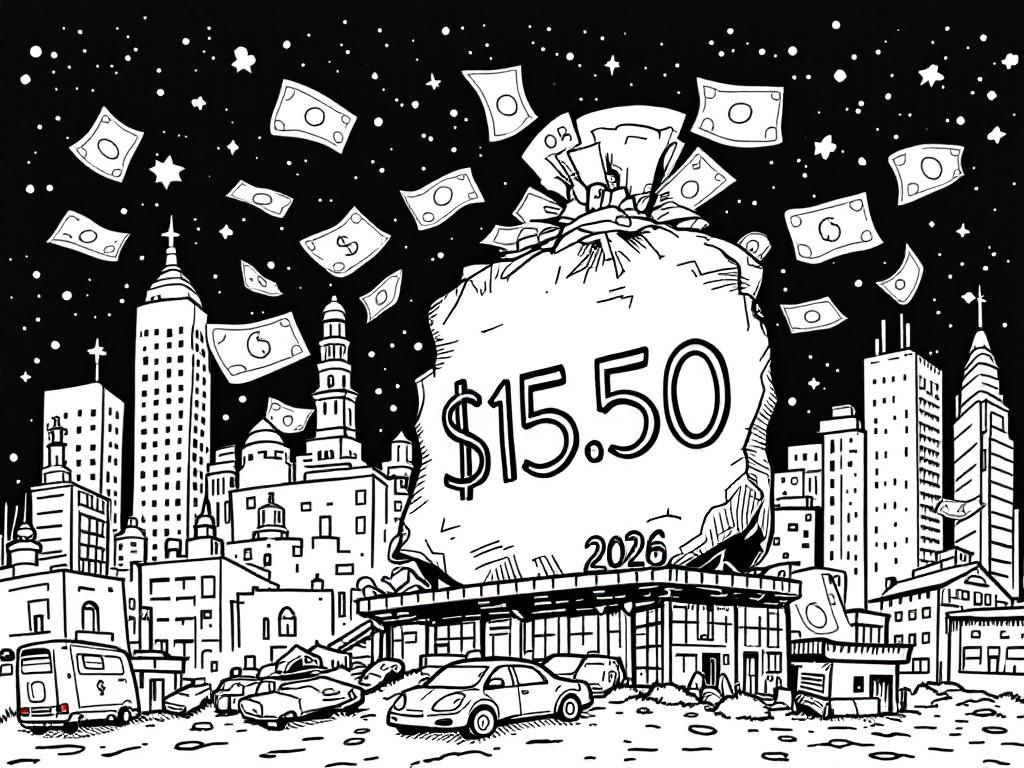New York State to Raise Minimum Wage to $15.50 in 2026

New York, Wednesday, 8 October 2025.
Starting January 1, 2026, New York’s minimum wage will increase by 50 cents to $15.50 per hour, addressing wage equity and inflation challenges.
The Context of the Wage Increase
The decision to increase New York State’s minimum wage to $15.50 per hour from January 1, 2026, was announced by Governor Kathy Hochul as part of a broader strategy to address wage equity and inflationary pressures. The increase of 50 cents per hour reflects a commitment to ensuring that workers can meet the rising costs of living, particularly in urban areas where expenses are significantly higher [2][3].
Implications for Businesses and Workers
Business owners across New York are preparing for the potential impact of the wage increase on operational costs and hiring practices. While the increase aims to provide fair compensation for low-income workers, it also poses challenges for businesses that may need to adjust their pricing strategies or consider automation to offset higher labor costs [2][3]. According to experts, such wage adjustments are crucial in helping low and moderate-wage workers improve their living standards and contribute to overall economic growth [1][4].
Political and Economic Landscape
The minimum wage increase in New York is part of a larger national conversation on wage policies. While the federal minimum wage remains at $7.25 per hour, individual states like New York have taken initiative to establish higher rates in response to local economic conditions [1][5]. This move aligns with ongoing discussions in the political arena, where figures such as New York City mayoral candidate Zohran Mamdani advocate for even higher wage targets, aiming for $30 per hour by 2030 [6].
Future Projections and Considerations
Looking ahead, New York’s minimum wage is set to increase annually based on the Consumer Price Index for Urban Wage Earners and Clerical Workers for the Northeast Region. This policy ensures that wage growth keeps pace with inflationary trends, thereby safeguarding the purchasing power of workers [2][5]. However, the balance between supporting workers and maintaining business viability remains a critical issue, as stakeholders seek sustainable solutions to wage and cost of living challenges [4][6].
Sources
- indicators.report
- www.mynbc5.com
- www.globalclimatechangeweek.net
- cfihaiti.com
- ocpathink.org
- www.newsday.com